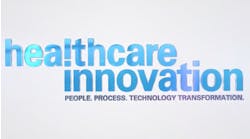What’s been made clear in all the sessions today in the AI and Healthcare Preconference Forum at HIMSS24, being sponsored by the Healthcare Information & Management Systems Society (HIMSS) at the Orange County Convention Center in Orlando, is this: AI (artificial intelligence) is complicated.
Well, that’s obvious, right? But it is and it isn’t. So what’s really happening?
The good news is that leaders, both clinician and non-clinician, in patient care organizations nationwide, are plunging in, and getting into the weeds, as they work to make AI real. They are developing what is now being called “traditional AI”—meaning, the development of formal algorithms to be tested and implemented—as well as using generative AI tools to continuously develop predictive capabilities. As many of today’s speakers noted, what’s happening now is, on the one hand, a logical extension of the path of unfoldment that has occurred organically in healthcare over the course of a couple of decades of leveraging data analytics.
At the same time, there is something different here, along two dimensions. First, everyone who spoke today agreed that the potential for AI to transform healthcare is great; at the same time, all the speakers also said repeatedly that there are considerable challenges in architecting the strategy, governance, and mechanics of AI tool development, and that goes double for generative AI. The level of consensus today really was absolutely noteworthy.
The good news is that the leaders of patient care organizations are tackling this in a very pragmatic way; indeed, all the speakers at today’s Forum referenced looking at clear burning platforms. As Anna Schoenbaum, D.N.P., M.S.N., R.N., vice president, applications and digital health at Penn Medicine, said on this morning’s panel, “We’re trying to improve patient outcomes, improve the patient and caregiver experience, and enhance academic research,” Schoenbaum reported. “Per in-baskets, we have 6 million in-basket messages coming into providers every year, and that’s mindblowing. But we’ve also been enhancing the patient portal. We’re working with our vendors to improve in-basket messaging; but it’s work and requires vendor support. It’s an ongoing, iterative process. The tool is being used 15 percent of the time, but when it’s used, it’s saving providers time. They get 6 million messages, so we’ve got to do something. But it takes time and resources. And on the back end, we’ve been implementing a clinical documentation improvement initiative. Our coders can work faster to document better. Ultimately, if we improve patient outcomes, you’ll reduce costs as well.” Schoenbaum was second in that sentiment by Sunil Dadlani, chief information and digital officer and chief information security officer, at Atlantic Health System. A key element in all of this, Dadlani emphasized, is, “Don’t start with the technology; always, always start with the problem you’re trying to solve.” Toyin Falola, M.D., VP, clinical product strategy, virtual care and digital health at Providence Health, said the same thing on the day’s final panel: “We always have to go back to, what problem are we trying to solve?”
Patrick B. Thomas, M.D., MMCI, director of digital innovation in pediatric surgery at the University of Nebraska Medical Center College of Medicine, put it this way: “The more we talk about it, the more conversations we have, the more we debate the utility of this—all of that is super-important. And that is in the context of all the opportunities for data-gathering. There’s tons of data out there, but we need to make sure we’re using these tools effectively and answering the questions around what difference it makes” in terms of solving actual problems.
Neri Cohen, M.D., Ph.D., head of clinical informatics at Bayesian Health, said on the final panel that the good news is that Ai development builds on itself, as early wins amplify each other. And, he added, “If you make it about the patients, everything else lines up. Also, make things easy to use; and lastly, be humble about what you can accomplish, and ask other people for input to knock you down, because that’s how you’ll do better.”
“Don’t live on hype; be cautiously optimistic about technology,” Falola advised the audience during the day’s final panel. But as we’re here living in healthcare, the technology is coming. We have to take on some of the responsibility to take on technology; we can’t leave it to other people to develop the technology.”
In the end, all of Monday’s speakers agreed that provider leaders need to focus on the problems they want to solve, and then to move forward strategically and intelligently to apply technology—including AI—in to solve those problems. “One of the challenges is creating ecosystems where we know exactly what AI we’re using and what AI we want to use,” Thomas Said. “And when leaders recognize that AI is rapidly changing healthcare, you have to create strategies to move with that. What type of opportunity do we want to create? And it goes back to what the question is that you’re trying to answer, and where the touchpoints will be around the human experience. What’s important for the providers, for the payers, for operational efficiencies. The key thing is what’s important for the patients.”
“And really, bringing process into the design of AI is really on us,” Sameer Sethi, senior vice president and chief data and analytics officer at Hackensack Meridian Health, concluded.
Yes, exactly that. And it will be fascinating to see everything evolve forward over the next few years; indeed, this year’s discussions showed advancements over last year’s—and that is a good sign indeed. I look forward to next year’s AI Forum; it certainly will be interesting to see what types of advances are made in patient care organizations in the next twelve months—and beyond.


